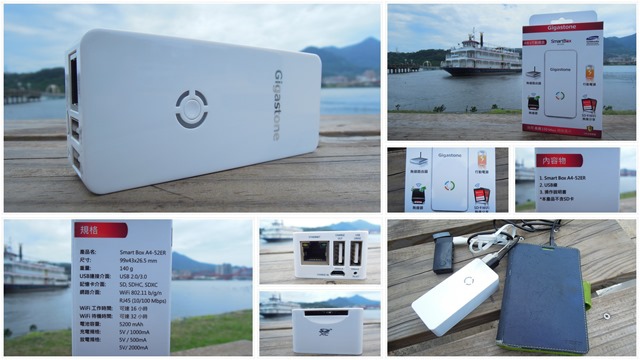“At this scale, when you help people save 10 minutes or an hour, you’re saving lifetimes of pain…And we’re just getting started.” That’s what CEO Drew Houston thinks about his company hitting 100 million registered users and 1 billion files saved a day. Here Houston tells me how he feels about being entrusted with so many memories, and how Dropbox will be the data layer connecting the future where every device is smart.
Drew’s an inspiring person to interview, so much so that I wrote a poem about Dropbox. But here’s the CEO’s thoughts.
“100 million registered users is a symbol, putting us in a new category with an elite handful of companies that have ever reached that audience” says Houston. That’s up from 50 million users and 500 million files saved every 48 hours as of May 2012, and 25 million users and 200 million files saved per day in April 2011. Dropbox is now on 250 million devices in over 200 countries, and is served in eight languages, including two new ones starting today: Italian and Castilian Spanish.
“It puts a quantitative spin on that feeling that we’re solving really important problems for a big chunk of the world,” not just Silicon Valley, Houston tells me. “Our users are trapeze artists, high school football coaches — I got cornered by a couple of theoretical physicists who said Dropbox lets them collaborate across the world and share their experiments’ results. They were raving about how it’s driving their research.”
Drew says Dropbox is fulfilling the promise of the cloud. For users, he believes “Dropbox is the first day of the rest of their life. I can take my laptop, throw it in the water, go to the Apple store, and start over like nothing happened.”
It really hit home for Drew when he heard the story of a panicked father who’d recorded the first years of his child’s life on his phone. Then one day he was pulling clothes out of the washing machine, heard a clanking sound, and saw his memories of his daughter dripping out of the phone. Then he remembered he’d turned on Dropbox Camera Upload, and all those moments were safe and sound.
Dropbox’s scale and that mission, to preserve our digital histories, are attracting great employees. Drew tells me that this year they “started at 90 people and just crossed 250. It’s the biggest growth year for us by a long shot. Now for any job opening, we can go after the top five people in the world. We want a designer? Ok, who built the iPhone?”
For example, Drew cites Aditya Agarwal, who used to be a director at Facebook but became Dropbox’s VP of engineering when it acquired his startup Cove. “Here’s someone who’s changed the world. He built news feed and [Facebook] search. He was employee No. 9. And he said ‘Dropbox is the only place I could have an impact like that again.’” The firepower to pull in employees like Agarwal is just one benefit of the $257 million in funding Dropbox has raised.
Dropbox has big ambitions, so it’s going to need the talent. While it might seem simple enough stitching together data from your laptop, phone, and tablet, as we enter the age of the “Internet of things,” it’s going to get a lot more complicated. Drew says Dropbox has a chance “to make your phone smarter, your TV smarter, your car smarter. In that sense we can be the fabric that ties everything together.”
The company’s independence might give it the best shot at becoming the data layer the way Facebook became the social layer. Apple, Google, and Microsoft all have their own cloud storage systems, but they don’t necessarily cooperate with each other’s devices. Drew declares: “Not one company is going to make everything. [With Dropbox] you don’t have to worry about what logo is on the back of your photo or computer.”
…Or your refrigerator, thermostat, or sound system. Becoming useful to people who don’t have all those fancy smart devices, just the basic ones like in emerging markets, is a big focus for the company. “There’s 2 billion connected internet users now and that’s going to go to five in the next few years. Anyone with a computer or a phone needs something like Dropbox.”
But there’s a lot of work to do to get to that point of being the omnipresent data layer that lets our personal memories and professional materials criss-cross between devices. “At our age, Apple hadn’t built the Macintosh, Microsoft hadn’t built Windows. We are now playing in another league and really have an opportunity to do amazing things at scale. This is the first stop on a new road to a billion.”
行動電源觀望 廠商營運添變數
 |
| Reference From 小巧無線存儲充電寶 |
盛群去年行動電源產品出貨達3283萬套,較前年大增近 2倍水準。市場原本看好,盛群今年行動電源產品出貨量可望進一步突破4000萬套,將較去年再成長10%至20%。
 |
| Microsoft Azure Option |
受行動電源產品出貨量明顯減少影響,松翰5、6月業績逐月滑落,與去年第2季業績逐月攀高表現大不同;6月合併營收新台幣3.25億元,月減5.54%,為近3個月新低水準。盛群指出,小米推出超低價行動電源產品,10400mAh大容量規格產品售價僅345元,5200mAh容量規格產品售價更低達255元,遠低於800至1000元市場行情價,對行動電源市場造成不小衝擊。
盛群表示,小米行動電源低價搶市,部分行動電源業者不願跟進,殺價競爭,客戶需求確實有轉趨觀望情況。除了行動電源市場需求降溫外,中國大陸持續打房,壓抑新屋銷售趨緩,連帶家電市場也遭受波及。
主打中國大陸家電市場的盛群,目前已感受到市場需求並未如先前預期樂觀;不過,盛群將透過推展新計畫,以彌平中國大陸家電市場降溫的影響。
松翰則看好網路攝影機及無線影音晶片產品發展前景,表示隨著網路及雲端環境漸趨成熟,包括網通業者及網路營運商紛紛推出智慧居家服務,帶動無線影音晶片等產品需求急遽升溫。松翰無線影音晶片產品前5月業績即較去年同期成長4成,是今年表現最佳的產品線,也是支撐整體業績得以成長的主要動力;松翰上半年合併營收18.11億元,年增1.93%。
雲端服務降價,競爭激烈
雲端價格戰開打!《紐約時報》報導,Google雲端業務來勢洶洶,挾帶削價85%、軟體更新服務等優勢,直逼亞馬遜(Amazon.com)的霸主地位。Google的雲端服務將減價30%至85%,雲端儲存費用降為每GB 0.026美元,比原先價格約低68%;運算引擎(Compute Engine)則不分區域、大小、等級,費用也將便宜32%,BigQuery數據分析服務價格約減85%。Google期望,未來可以將雲端業務轉型為整合應用程式和數據的產品,而不僅僅是許多分散的功能。
從策略角度來看,Google大砍雲端服務價格是相當聰明的做法。亞馬遜首創雲端運算商機,2006年開始出租電腦運算能力和儲存空間給其他企業。知名品牌如Netflix、Shell等都透過亞馬遜的平台來經營事業,但卻要付出昂貴的費用,許多較小的網路商吞不下成本,只好轉往雲端系統。
Google除了和亞馬遜、微軟、Rackspace Hosting Inc.等公司競爭,也需要和新的供應商搶客戶。研調機構Gartner預估,雲端服務市場規模去年達1310億美元。
Google科技基礎設施資深副總裁赫爾茲(Urs Holzle) 25日表示,雲端伺服器和儲存系統成本大幅下滑,但是雲端運算費用卻未隨之持續調降,他們認為兩者之間不該存在龐大價差。未來Google運算引擎(Compute Engine)服務將砍價約32%,應用程式開發平台(App Engine)也將降價30%。
此外,Google也已於13日宣布,「雲端硬碟(Google Drive)」服務費率也將大減價,100 GB雲端儲存空間的月費從先前的4.99美元調降40%至2.99美元,1 TB的月費更從先前的49.99美元大砍80%至9.99美元;而10 TB的月費為99.99美元,使用者還可加價換取更多儲存空間。
分析
- 智慧型手機雲端需求大於週邊需求是趨勢,很難檔雲端需求之趨勢;
- 雲端儲存最大缺點是資料存在雲端沒有保密性,而且相當競爭;















沒有留言:
張貼留言